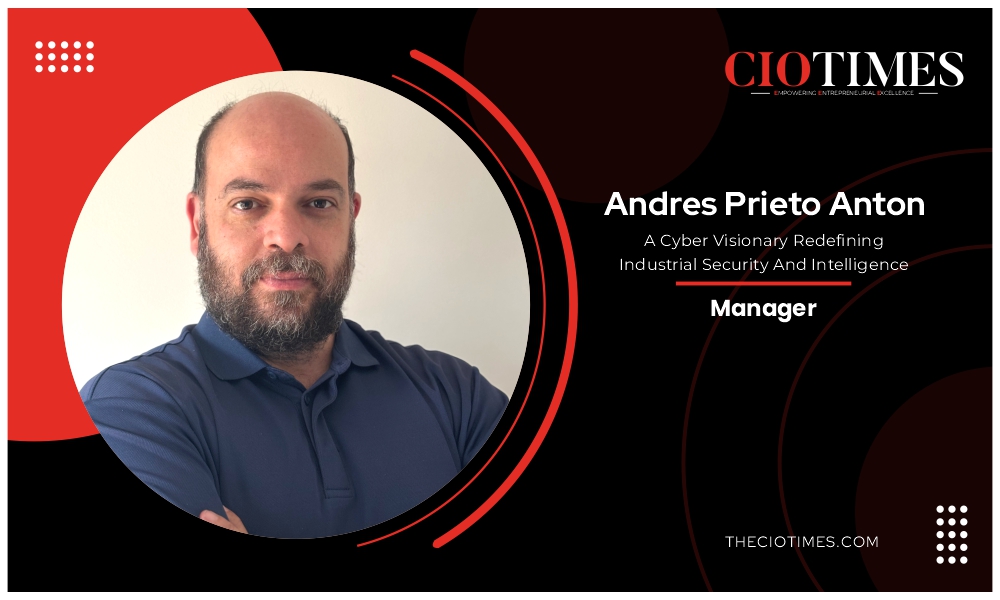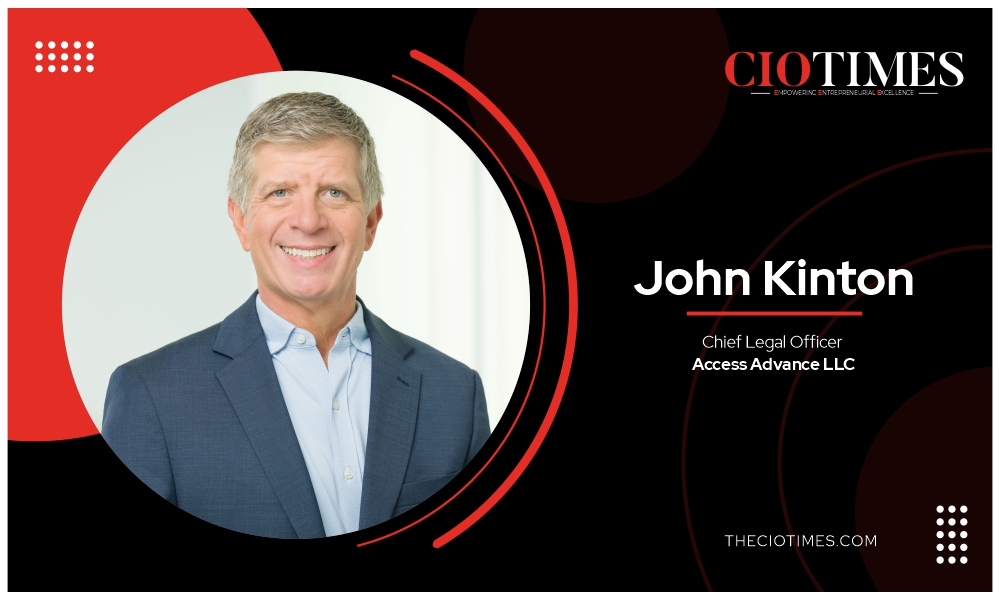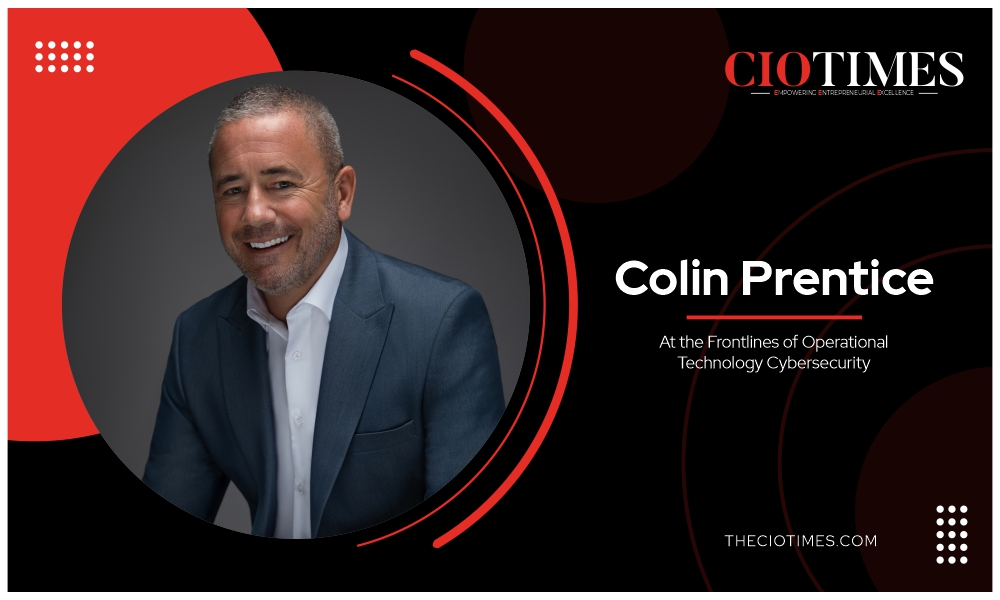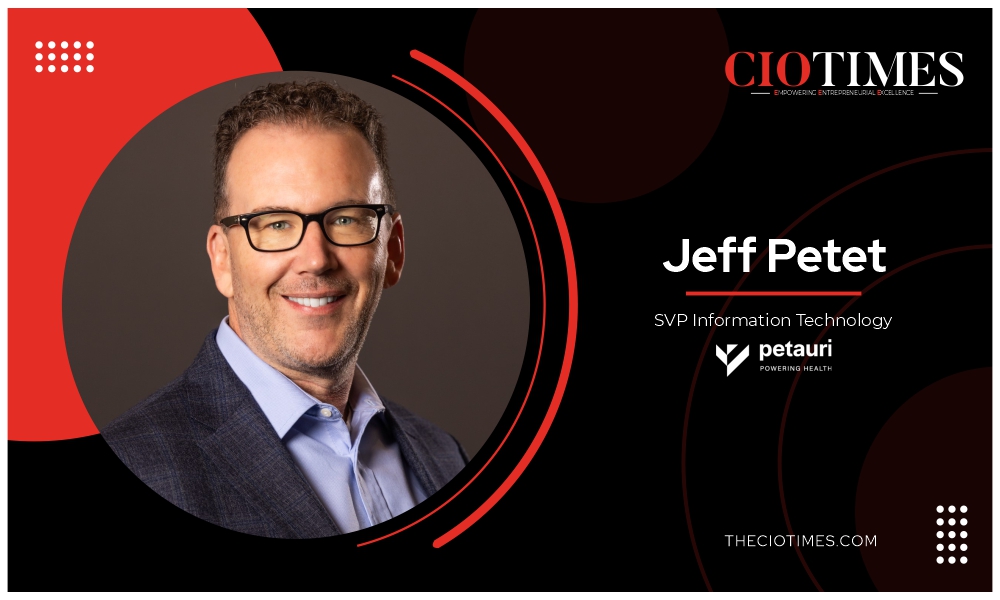In an era where digital transformation is redefining the industrial landscape, the convergence of IT and cybersecurity within Operational Technology (OT) has become not just a strategic advantage but a necessity. At the forefront of this evolution stands Andres Prieto Anton, a visionary leader whose career has been a masterclass in bridging the once-siloed worlds of IT infrastructure and industrial systems.
With roots in traditional IT and a deep-seated passion for cybersecurity, Andres has carved a niche in safeguarding critical infrastructure across sectors like manufacturing, pharma, and energy. His unique ability to integrate technical precision with operational pragmatism has made him a trusted architect of resilient OT infrastructure & security frameworks. From his early days in system administration to leading global IT/OT security initiatives, Andres has consistently championed innovation without compromising safety or uptime.
What sets him apart is not just his technical acumen, but his people-first approach to security, ensuring that digital defenses empower rather than encumber industrial progress. As industries grapple with legacy systems, proprietary protocols, and rising cyber threats, Andres is proving that with the right mindset and strategy, convergence isn’t just possible—it’s transformative.
A Journey Fueled by Purpose
Andres’ professional journey is a testament to curiosity, adaptability, and a deep sense of responsibility. Beginning in IT infrastructure, he quickly found himself drawn to the intricate world of Operational Technology (OT)—a domain where digital systems meet physical operations. What started as a fascination with the convergence of IT and industrial systems soon evolved into a mission: to safeguard critical infrastructure from the rising tide of cyber threats.
With hands-on experience in system administration and a growing awareness of the vulnerabilities in industrial environments, Andres recognized that OT cybersecurity wasn’t just a technical challenge—it was a matter of public safety, operational continuity, and national resilience. This realization propelled him into a specialized path where he now leads global initiatives that bridge IT precision with OT pragmatism. His work is not only about protecting systems but about enabling industries to innovate securely in an increasingly connected world.
Securing Innovation: The Strategic Backbone of Digital Growth
For Andres, cybersecurity isn’t a support function—it’s a strategic enabler. At the intersection of infrastructure and innovation, he sees cybersecurity as the silent force that protects intellectual property, ensures operational continuity, and builds trust with customers across the globe. “When security is embedded into the foundation,” Andres explains, “it empowers the business to move faster, smarter, and with confidence.”
His approach is rooted in the belief that infrastructure isn’t just about systems—it’s about creating resilient pillars that uphold the company’s digital ambitions. Whether it’s safeguarding sensitive data or ensuring uptime in critical industrial environments, Andres aligns every layer of infrastructure and cybersecurity with the broader business strategy. The result? A secure-by-design ecosystem that fuels transformation without compromising reliability.
Navigating the Complex Terrain of Industrial Cyber Defense
Andres has observed that the greatest challenge in OT cybersecurity isn’t just technical—it’s cultural. “You can deploy the best tools, but without a mindset shift, they won’t stick,” he notes. Driving security in industrial environments means confronting deeply embedded legacy systems, many of which were never designed with cybersecurity in mind. These aging assets often lack modern controls, making them vulnerable entry points in an increasingly connected ecosystem.
Compounding the issue is the delicate balance of IT/OT integration. Unlike traditional IT systems, industrial control systems (ICS) demand near-zero downtime, making patching and updates a high-stakes operation. Andres emphasizes the need for adaptive defenses that evolve with the threat landscape while ensuring operational continuity. His approach blends technical rigor with strategic foresight—building security frameworks that are not only resilient but also respectful of the unique rhythms of industrial environments.
Building Cyber Fortitude into Industrial DNA
Andres believes cybersecurity resilience in manufacturing isn’t a checklist—it’s an architectural mindset. He champions a layered defense strategy that blends network segmentation, real-time monitoring, and OT-specific incident response protocols. But what truly sets his approach apart is the human element: fostering seamless collaboration between IT, OT, and business units to embed resilience into the very fabric of operations.
In environments where uptime is sacred and legacy systems abound, Andres ensures that security measures are not only robust but also operationally viable. His strategies are tailored to the unique tempo of industrial systems, where even a minor disruption can ripple across production lines. By aligning technical safeguards with cultural readiness, he transforms cybersecurity from a reactive function into a proactive enabler of industrial continuity.
Breaking the Illusion
One of the most persistent myths in industrial cybersecurity, according to Andres, is the belief that Operational Technology (OT) systems are inherently secure because they operate in isolation. “That assumption,” he warns, “is dangerously outdated.” As industrial environments become increasingly connected—integrating cloud platforms, remote access, and smart sensors—the once-reliable air gap has all but vanished.
Andres emphasizes that OT systems now face risks comparable to those in IT but with far more complex constraints. “You can’t just copy-paste IT security into OT,” he explains. “The stakes are different, the systems are fragile, and the tolerance for downtime is near zero.” His approach? Apply the same risk-based mindset as in IT, but tailor the implementation to OT’s unique operational realities. That means designing controls that respect uptime, legacy protocols, and human workflows—without compromising on protection.
This nuanced perspective is what sets Andres apart: he doesn’t just bridge IT and OT—he redefines how we think about security in the industrial age.
Zero Trust, Global Reach
For Andres, protecting global operations begins with a mindset shift—trust nothing, verify everything. At the heart of his cybersecurity strategy lies a robust zero-trust architecture, designed to ensure that no user, device, or system is granted access without continuous validation. “In critical infrastructure,” Andres notes, “a single breach can ripple across continents. Zero trust minimizes that risk by shrinking the attack surface and sharpening our threat detection.”
But architecture alone isn’t enough. Andres reinforces this foundation with strict access controls, real-time threat monitoring, and routine security audits tailored to the unique demands of OT environments. He also places strong emphasis on employee training and vendor risk management, recognizing that human and third-party factors are often the weakest links in the security chain.
His approach is both technical and cultural—embedding resilience into the DNA of operations while ensuring that innovation doesn’t outpace protection. It’s a strategy that doesn’t just defend the perimeter; it redefines it.
Embedding Security into Every Digital Step
For Andres Prieto Anton, digital transformation and cybersecurity aren’t opposing forces—they’re interdependent pillars of sustainable progress. He believes that true innovation only thrives when built on a secure foundation, which is why he integrates cybersecurity from the earliest design stages through to deployment and beyond. “Security isn’t a final checkpoint,” Andres emphasizes. “It’s a continuous thread woven through every phase of transformation.”
His strategy hinges on proactive risk assessments and adaptive security controls that evolve with both the threat landscape and the operational environment. Drawing from his deep experience in OT and IT convergence, Andres ensures that security measures are not only technically sound but also operationally feasible—especially in high-stakes industrial settings where uptime is non-negotiable. This holistic approach allows organizations to innovate boldly while staying resilient, compliant and prepared for the unexpected.
Words of Experience
To companies looking to strengthen their OT security, Andres says:
“Start with understanding your OT environment thoroughly, asset inventory (knowing what you have), implement network segmentation, prioritize patch management, and foster collaboration between IT and OT teams. Investing in continuous monitoring and incident response is essential. Proper patching policies for OT, proper EDR/AV implementations (specialized in OT environment if possible).”
Future-Ready by Design
For Andres, the future of cybersecurity isn’t just about reacting to threats—it’s about anticipating them with precision and purpose. As industrial environments grow more connected through edge computing and AI-driven automation, Andres is preparing for a landscape where threat detection must be faster, smarter, and more adaptive. He’s actively aligning his strategies with emerging trends like zero trust, supply chain security, and evolving global regulations—ensuring that resilience is not just a goal, but a built-in capability.
Looking ahead, Andres envisions a future where IT/OT convergence is seamless, powered by intelligent automation and cross-functional collaboration. His personal mission over the next five years is to lead and mentor global teams that integrate AI into security operations—proactively neutralizing threats before they escalate. A strong advocate for knowledge-sharing, he’s also committed to upskilling OT professionals in cybersecurity fundamentals, believing that education is the first line of defense in reducing risk and fostering unity between IT and OT.
By staying engaged in global forums like Industri X and cybersecurity think tanks, Andres ensures his strategies remain informed, inclusive, and future-proof. His vision is clear: a digitally resilient world where innovation and security evolve hand in hand.
Quote: “Cybersecurity is a continuous journey requiring vigilance, adaptation, and collaboration.”
Visit our digital magazine – Read his powerful perspective on securing the future of industrial tech





